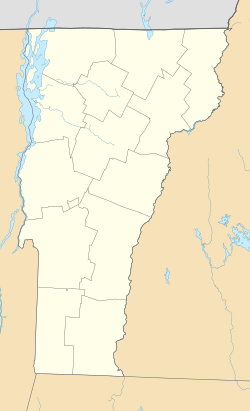Moscow Village Historic District facts for kids
Quick facts for kids |
|
|
Moscow Village Historic District
|
|
| Location | Moscow Rd., Shaw Hill Rd., Adams Mill Rd., River Rd., Stowe, Vermont |
|---|---|
| Area | 65 acres (26 ha) |
| Built | 1822 |
| Architectural style | Greek Revival, Gothic Revival, Italianate |
| NRHP reference No. | 08000744 |
| Added to NRHP | July 31, 2008 |
The Moscow Village Historic District is a special area in southern Stowe, Vermont. It was once a busy village in the 1800s where people worked with wood. This historic district is located around the Little River where Moscow Road crosses it. The village was very successful until the early 1900s because of its woodworking businesses. In 2008, it was added to the National Register of Historic Places, which means it's an important place to protect.
Contents
What is the Moscow Village Historic District?
The Moscow Village Historic District is a place where you can see buildings from the 1800s and early 1900s. It shows how people lived and worked a long time ago. This area is centered around the Little River. A bridge built in 1949 crosses the river here. You can also see two dams just downstream from the bridge.
Where is the Historic District Located?
The district spreads out on both sides of the Little River. South of the river, it follows Barnes Hill and Adams Mill Road. This part of the district runs next to the river, west of the bridge. On the north side, the district goes west along Moscow Road, also next to the river. It also extends east along River Road to where it meets Shaw Hill Road.
What Kinds of Buildings Are There?
The Moscow Village Historic District has about 25 different buildings. These include homes, old factories, and shops. Most of them are made of wood and are one or two stories tall. You can still see an old general store and a school building. The old school is now used as an artist's studio.
History of Moscow Village
The town of Stowe began to be settled in the 1790s. By the early 1800s, three small villages grew up along the Little River. The village furthest south was first called Smith's Falls. By 1839, people started calling it "Moscow."
How Did Moscow Village Grow?
In 1822, a man named Alexander Seaver built a dam on the river. Soon after, a mill for processing wool (a carding mill) and a sawmill for cutting wood started working. The dam was rebuilt with concrete in 1918, and it's still there today. The sawmill also still stands and is now a woodworking shop. Alexander Seaver's house, built in 1825, is also still standing.
The village became successful for two main reasons. First, it provided services to the farms nearby. Second, it became a center for woodworking. The area had many rich forests, which provided plenty of wood for businesses to use. This made Moscow a busy and important place for many years.



